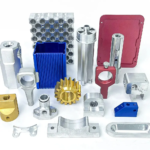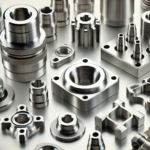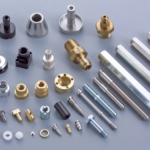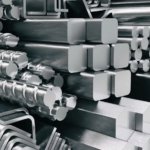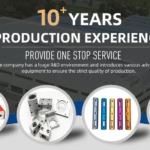Choosing the filament is3DAn important printing decision can have a significant impact on the outcome of the project. for your3DChoosing a new filament material for your printer means you need to invest money, time and energy to print smoothly on your machine. Of course, before making an investment, it is worth checking whether a certain filament is suitable for your project and machine.
In applications requiring mechanical strength and rigidity,ASA and ABS are two commonly used options. But how to choose between the two? Although they have some similarities, such as being very durable, ABS is not a good replacement for ASA in all situations.
ABS is a versatile 3D printing material that can be used to create anything from hooks to pretty indoor planters. ASA, on the other hand, although heavier to use, is a good choice for exterior or mechanical parts that need to withstand the elements.
In this article,Mohou.com will work with you allA Deep Dive into 3D PrintingThe main differences between ABS and ASA, their properties, how to print with both materials and, most importantly, when to use them. By understanding these aspects, you will be better equipped to choose the right filament for your 3D printing project. Let’s get started!
ASA and ABS compete with each other:


ABS can withstand certain stresses during use (Source: All3DP)
Before we look at the differences and usefulness of these two materials, we need to briefly look at the raw materials, manufacturing processes, and how these factors affect the physical and chemical properties of each material.
ABS
ABS (Acrylonitrile Butadiene Styrene) is a cheap and easy to find material with some mechanical strength and is one of the most popular 3D printing filaments on the market. It can be easily painted, worked, sanded and even chemically smoothed. It is one of the most commonly used filaments because it is easy to print and affordable.
However, for beginners,ABS can be a difficult material as it is prone to some difficulties when printing. Unlike polylactic acid filament, ABS filament is prone to warping and shrinkage due to poor bed or ambient temperature.
Efforts have been made to avoid the use ofABS as printer filament. There’s no denying that ABS printing will produce odors, but it’s hard to say how dangerous it is. If you plan to print frequently with ABS, consider adding some ventilation to your setup and avoid using ABS in food contact applications.
ASA


For a long outdoor life,ASA is preferable (Source: wallydoggy via Printables)
ABS and ASA (acrylonitrile-styrene-acrylate) are not only similar in name, but also in chemical composition. The difference between the two is that butadiene (“B”) in ABS is replaced by butyl acrylate (“A”) in ASA. This means that the UV-sensitive parts of the ABS are replaced with a stronger, UV-resistant alternative. This substitution has a significant impact on the applicability of the ASA component.
ASA has excellent weather and UV resistance, making it an excellent choice for rooms frequently exposed to the outdoors. ASA is also resistant to water, oil and other chemicals. Although ASA has similar strength to ABS, ASA is much stronger than ABS when exposed to the external environment.
AndLike ABS, ASA also produces potentially harmful odors and fumes, so printing covers with these two materials is inevitable. ASA requires higher temperatures when printing, which may exceed the capabilities of some office printers. You may also see some shrinkage and warping, but probably not as much as with ABS. Although ASA has some advantages over ABS, its price is relatively high and it is difficult to purchase.


ABS can crack due to internal stress and poor adhesion between layers (Source: All3DP)
AndCompared to ABS, ASA requires higher nozzle temperature, hotter heated bed and longer cooling time. If you plan to print frequently with ABS, you need to take into account the greater power consumption required.
Although specific temperatures may vary slightly between manufacturers,ABSPrintThe optimum temperature is the nozzle temperature210-255°C, bed temperature is around 80-110°C. ASA recommends a nozzle temperature of 240 to 260°C and a bed temperature of 90 to 110°C. Printing the first layer with a slightly higher nozzle temperature may make it easier to bond the two filaments together.
You can alleviate warping issues with both filament types by using a cooling fan in the case and out of the assembly. This will increase the ambient temperature around the print, promoting uniform and gradual cooling. For larger rooms,ABS and ASA must have a case, but for small and simple prints you can do without a case.
AndASA has better adhesion than ABS, however, ASA can adhere too much to the bed surface. Using a flexible PEI bed can help ensure removal goes smoothly.
post-processing


The ASA appears to be injection molded after smoothing with acetone (Source: via Reddit)
When post-processing is required, both filaments handle the task with ease. They hold up well to sanding, coating or painting. The acetone straightening method can doThe surface of ABS is as smooth as ever and is also suitable for ASA.
but,The inherent superior adhesion of ASA results in less visible lamination and therefore requires less post-processing.
Part performance


Even in the sun, itASA hooks also work well under tension (Source: Benoit Lussier via Printables)
ABS and ASA have similar mechanical strengths, so you don’t have to worry that strength will be compromised if you choose the more cost-effective ABS. However, you should think about where you plan to use printing to help you decide if upgrading to an ASA is a good idea.
3DIs the print left at room temperature to use, or is it intended to be used at high temperatures? Will it be exposed to high temperatures on a regular cycle?ASA can withstand high temperatures (up to 100°C) and low temperatures better than ABS, which expands and contracts more easily with temperature changes.
your3D printingWhat outdoor environments will it be exposed to?The excellent adhesion of ASA layers makes it ideal for applications requiring watertightness. ASA is resistant to almost all external factors, even acidic or alkaline conditions, while ABS can be affected by humidity, UV rays, acetone, etc.
application


ABS is a very durable material suitable for frequently used parts (Source: All3DP)
ABS is universalPrintA versatile and reliable choice, whether it’s a storage container, a play piece or a pretty lampshade. If it is an indoor item subject to moderate to medium pressure and not exposed to humidity or strong sunlight,ABS is obviously the best choice.
As long as it isFor the applications that ABS is capable of, ASA is also capable of that, and much more. ASA is highly resistant to UV rays and impact and can be used in housings for electronic components, tools, automotive accessories and even remote-controlled aircraft. If you want to print with everyday tools that require strength and reliability, ASA should be the material of choice. However, due to its higher price, it is best used for more demanding applications.
Daguang focuses on providing solutions such as precision CNC machining services (3-axis, 4-axis, 5-axis machining), CNC milling, 3D printing and rapid prototyping services.



